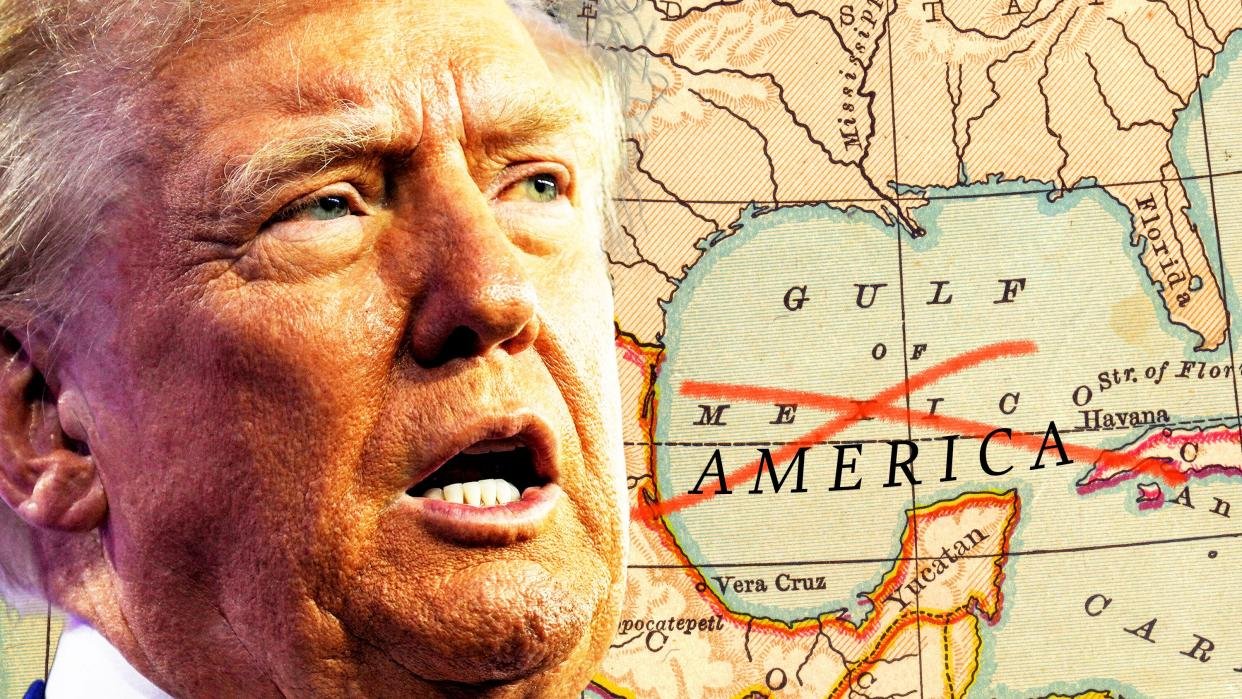President-elect Donald Trump is once again making headlines with an audacious global move—this time setting his sights on renaming the Gulf of Mexico. Much like his past consideration of purchasing Greenland, Trump reportedly plans to issue an executive order on his first day in office to change the name to the “Gulf of America.”
This push follows his repeated assertions that the Gulf’s current name does not appropriately honor the United States.
Who Controls the Gulf of Mexico?
While no single nation “owns” the Gulf outright, these three countries share economic and territorial interests in the region.
Key industries thriving in the Gulf include:
- Fishing – A major source of seafood supply for the region.
- Energy Production – Offshore oil drilling plays a significant role in global energy markets.
- Shipping & Trade – A crucial hub for international commerce.
Despite these shared interests, Trump has argued that America does the “most work” in maintaining security and infrastructure in the Gulf. He has repeatedly insisted that the body of water should reflect America’s dominance and influence in the region.
Why Is It Called the Gulf of Mexico?
The Gulf of Mexico’s name does not actually originate from the modern nation of Mexico. Instead, historians trace the name back over 400 years to a Native American city known as “Mexico.”
While Mexico, Cuba, and the U.S. all have territorial claims in the Gulf, Trump and his supporters argue that the U.S. shoulders the burden of protecting it. As a result, they believe a name change is justified.
Can Trump Actually Rename the Gulf of Mexico?
While Trump’s proposed executive order could require all federal and state agencies to adopt the name “Gulf of America” in official government documents, international recognition would be a different matter entirely. Other nations, including Mexico and Cuba, are unlikely to recognize such a unilateral decision.
Under international law, the United Nations Convention on the Law of the Sea establishes each country’s maritime boundaries. Currently, the U.S. controls territorial waters extending 12 nautical miles from its shores. Additionally, it manages parts of the Outer Continental Shelf for resource extraction. However, this does not grant exclusive ownership over the entire Gulf.
Political Reactions & Congressional Support
Trump’s proposed renaming effort has gained support from some of his allies, including Congresswoman Marjorie Taylor Greene. She has expressed interest in introducing legislation to make the name change official, although she acknowledges that an executive order from Trump could accomplish the same goal.
Greene’s argument:
“The American people are footing the bill to protect and secure the maritime waterways for commerce. Our U.S. armed forces protect the area from any military threats from foreign countries. It’s our Gulf. The rightful name is the Gulf of America.”
Trump’s Broader Agenda Against Mexico
Trump’s push to rename the Gulf seems to fit within a larger political offensive against Mexico. He has repeatedly criticized the country, calling it “very dangerous” due to drug trafficking and illegal immigration.
His proposed policies include:
✔ Imposing tariffs on Mexico and Canada if they fail to meet U.S. demands.
✔ Strengthening border security to reduce immigration.
✔ Pressuring Mexico to take stricter action against drug cartels.
Despite Trump’s claims that Mexico contributes to America’s problems, experts argue that U.S. demand for illegal drugs is the main driver of drug trafficking from Mexico. Furthermore, many economists warn that imposing tariffs could strain U.S.-Mexico trade relations, which are vital for industries like agriculture, manufacturing, and energy.
Final Thoughts: A Name Change That May Not Stick
While Trump can direct federal agencies to refer to the body of water as the Gulf of America, the international community, historians, and political opponents are unlikely to accept the change. The Gulf of Mexico has centuries of historical significance, and renaming it unilaterally could create diplomatic tensions.
For now, it remains uncertain whether Trump’s executive order will hold any real power beyond symbolic political messaging. One thing is clear: his proposed name change is yet another controversial move that will keep the world watching his presidency closely.




